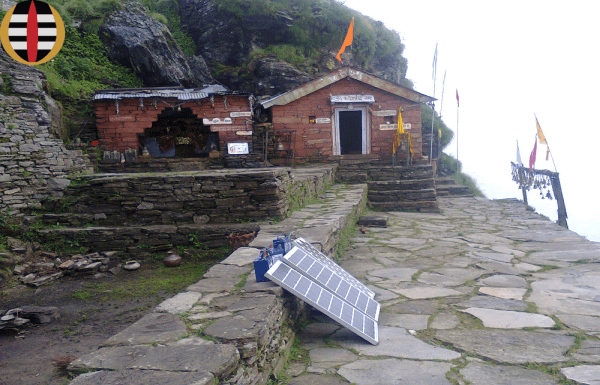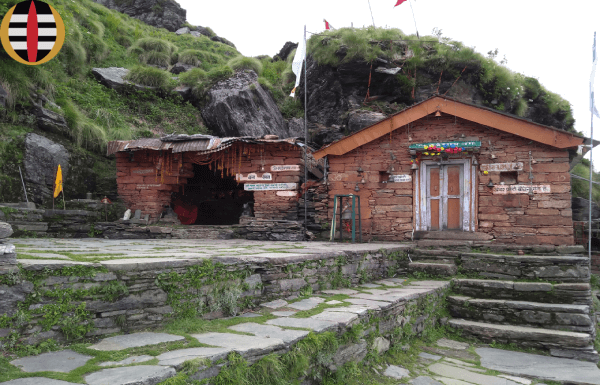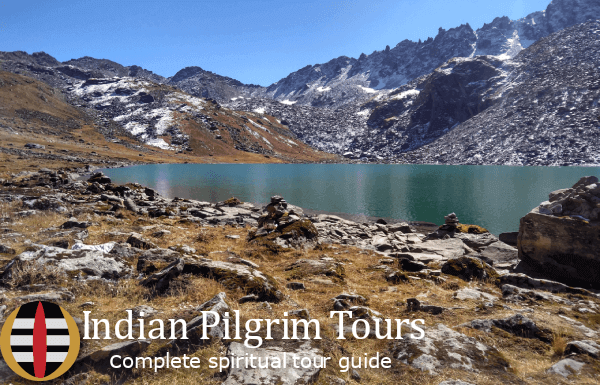Rudranath
(4th Kedar)
(IPLTOURS)
Rudranath is the 4th Kedar among the Pancha Kedar Hindu Shiva Kshetrams in Himalayan Range. The temple is natural rock temple and is at a height of 11800 feet above sea level. The Temple situated in a dense forest of rhododendron dwarfs and Alpine pastures in the middle of thick forest area. The other temples Kedarnath, Madhyamaheswar and Tunganath have to be visited before visiting Rudranath. Kalpeswar has to be visited after Rudranath.
Rudranath is the 4th Kedar Temple among the Pancha Kedar situated in the Himalayan Range of Uttarakhand. The Temple is 11800 ft height above to sea level and natural rocky temple. The temple is in the dense forest of troll gunner trees and mountain grassy lands. The face part of the bull, embodiment of Shiva worshipped here as Neelakanta Mahadev. Pilgrims after return from Tunganath have to travel 31 km and 10 km trek (5 hrs) from Chotpa to reach Panargupha and from Panargupha.
Pilgrims have to trek 12 km (6 hrs) to reach Rudranath or from Chamoli in Badarinath route to Gopheswar 12 km and 12 km trek and the way pass through Anasuya Devi Temple. The way is too critical and hurdle. Dasnami Gosaina are the Chief priests in Rudranath and Kalpeswar nominated by Adi Sankaracharya. After completing the pilgrimage of Lord Shiva’s dharsan in Panch Kedar temples, Pilgrims have to visit Lord Vishnu in Badrinath Temple to get the blessings of Lord Shiva. There is no Air, Rail and Bus facility to the Pancha Kedar except Kedarnath and Badrinath. Pilgrims have to travel nearly 800 km by road engaging private taxi or by bus and to travel nearly 130 km by walk. Pilgrims are advised to practice walking daily from 6 months before their Pilgrimage. Old age Pilgrims suffer from Diabetes, B.P. and heart complaint are advised not to think about this Pilgrimage. Uttaranchal Tourism Corporation provides Pancha Kedar Yatra for Rs.45000/- per head which will complete in 14 Nights/15 days.
The legend is that Pandavas, the heroes of the Mahabharata, defeated and killed Kauravas in Kurukshetra war. They wished to free from their sins of Gotra Hatya and Brahmana Hatya in the war. Pandavas handed over the ruling of their kingdom to their kin and left searching lord Shiva and to get his blessings. They went to Varanasi, the favourite city of Shiva. Shiva wanted to avoid them as felt angry to the death and dishonesty in Kurukshetra war and not insensitived to Pandavas’ prayers. Shiva assumed the form of a bull (Nandi) and disappeared in the Garhwal region. Pandavas have not find Shiva in Varanasi and gone to Himalayas. Bhima stand between to mountains and started to find out Shiva. He has find a bull grazing near Guptakshi and Bhima recognised the bull to be Shiva. Bhima caught hold the tail of the bull and it was disappear in the ground and later re appeared by splitting the body into five parts. The parts with the hump raising in Kedarnath, appearing the arms in Tunganath, the navel and stomach surfacing in Madhya maheshwar, the face in Rudranath and hair and head in Kalpeshwar. The Pandavas, built temples at the five places for worshipping Shiva and thus freed from their sins. The front body of Shiva appeared at Doleshwor Temple, Nepal. After construction of the Pancha Kedar Temples, Pandavas meditated at Kedarnath and performed Yagna. They have attained Swargarohana through the Mahaprastana.
Photo Gallery
IPLTOURS – Indian Pilgrim Tours













